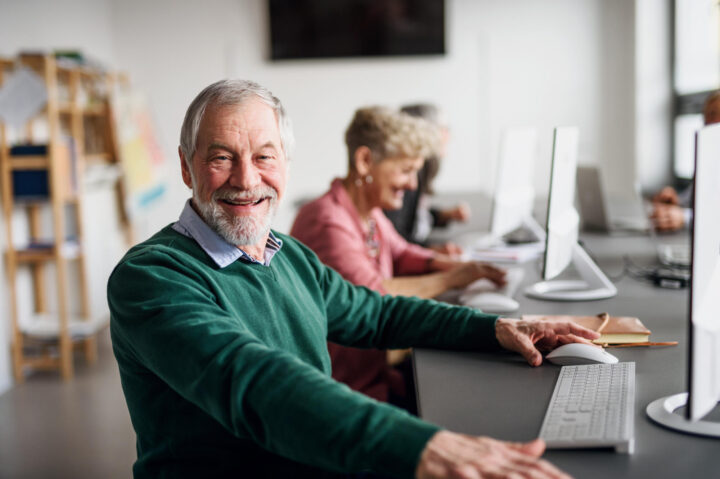Why Do Seniors Feel Colder Than Everyone Else? The Science Behind It and How to Stay Warm
A chill in the air feels different when you’re older. While younger people toss on a light jacket and go about their day, many seniors find themselves layered up, still shivering even when it’s not that cold outside.
It’s not just about the weather; there’s real science behind why aging bodies struggle more with temperature regulation. Understanding this shift can help older adults not only stay comfortable but also avoid health risks tied to cold exposure.
The Body’s Changing Thermostat

As we age, our bodies don’t regulate temperature as efficiently. The internal “thermostat,” controlled by the hypothalamus, becomes less responsive. This means the signals that tell your body to warm up or cool down aren’t as strong or effective.
Blood vessels don’t constrict as quickly to preserve heat, and the skin’s ability to sense temperature changes diminishes. Combine that with a slower metabolism, and you’ve got a recipe for feeling colder more often.
On top of that, muscle mass naturally decreases with age. Muscles generate heat, so less muscle means less warmth. This is one reason why strength training can be beneficial—not just for mobility but also for maintaining body heat. It’s not about becoming a bodybuilder; even light resistance exercises can make a difference.
The Hidden Impact of Medications and Health Conditions
Medications play a bigger role than most people realize. Common prescriptions for high blood pressure, depression, or anxiety can affect how the body regulates heat. Beta-blockers, for example, slow the heart rate, which can reduce circulation and make extremities feel colder. Diuretics can lead to dehydration, which also impacts how the body handles temperature changes.
Chronic health conditions like diabetes, thyroid disorders, and anemia further complicate things. Poor circulation in diabetes can cause cold feet and hands, while hypothyroidism slows metabolism, reducing heat production. Even seemingly unrelated issues like arthritis can affect comfort, as stiff, inflamed joints often feel worse in cooler temperatures.
When considering these factors, it’s easy to see how cold weather becomes more than just an inconvenience. For seniors, prolonged exposure to low temperatures can lead to hypothermia, even indoors if the environment isn’t warm enough. Weak bones in seniors also increase the risk of falls during colder months when icy sidewalks and stiff joints collide.
Creating Safe and Comfortable Living Environments
While adding another sweater helps, creating a warm living environment is key. This goes beyond cranking up the thermostat. It’s about ensuring the entire space supports warmth and safety.
Sealing drafts, using thermal curtains, and keeping interior doors closed can help retain heat. Heated blankets and warm bedding make a noticeable difference, but safety is essential—especially with electric blankets. They should be in good condition, with automatic shut-off features to prevent overheating.
Now, when it comes to older adults facing cognitive challenges, like dementia or Alzheimer’s, temperature regulation becomes even more complicated. These individuals might not recognize when they’re too cold or forget to dress appropriately. In this case, whether it’s a center with memory care in Boston, Nashville or wherever you live, they’re essential for safety.
Such facilities are designed with these needs in mind, providing not just medical oversight but also environments tailored to prevent temperature-related risks. They ensure rooms are consistently warm, clothing is weather-appropriate, and staff are trained to notice signs of cold stress before it becomes dangerous.
The Emotional Side of Feeling Cold
There’s also an emotional toll to feeling cold all the time. It can lead to withdrawal from social activities, especially during winter months. This isolation can trigger feelings of loneliness or even depression.
Social connections are vital for mental health, and staying warm can help keep those connections strong. Instead of skipping gatherings, seniors can prepare with warm layers, heated car seats, or planning outings during the warmest parts of the day.
Family members play a big role here, too. It’s easy to overlook temperature issues if you’re not feeling cold yourself. Checking in, noticing if a loved one is always bundled up or avoiding certain rooms, and offering solutions can make a big difference. Sometimes, all it takes is rearranging furniture to sit closer to heat sources or adjusting the thermostat slightly.
Staying Warm Without Sky-High Energy Bills
One concern, especially for those on fixed incomes, is the cost of heating. Energy bills can spike during the winter, making some seniors hesitant to turn up the heat. But there are budget-friendly ways to stay warm without breaking the bank.
Layering isn’t just about piling on sweaters—it’s about the right kinds of layers. Thermal undergarments, wool socks, and fleece-lined clothing trap heat effectively. Heated pads for chairs or warm water bottles can provide localized warmth without using much electricity. Even simple habits, like drinking warm beverages throughout the day, can help maintain body temperature.
Community programs often offer energy assistance for seniors, providing financial support or even free home weatherization services. It’s worth checking with local organizations, especially as resources vary by location.
More Than Just a Chill
Feeling cold isn’t just a seasonal annoyance for seniors; it’s a signal that the body is changing. While some of these changes are a natural part of aging, they don’t have to compromise comfort or safety.
By understanding the underlying causes and making thoughtful adjustments at home—and seeking supportive environments when needed—seniors can enjoy warmth, connection, and peace of mind all year long. Staying warm isn’t just about battling the cold outside; it’s about creating spaces and habits that support well-being from the inside out.


